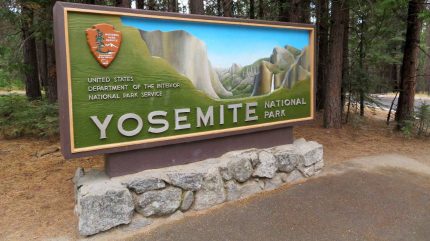
Yosemite National Park in California, US, has begun construction on the El Portal Wastewater Treatment Plant, a project involving a $239m investment aimed at modernising the park’s wastewater infrastructure.
The new wastewater treatment facility is funded by the Legacy Restoration Fund of the Great American Outdoors Act, enacted in 2020 during US President Donald Trump’s first tenure.

Discover B2B Marketing That Performs
Combine business intelligence and editorial excellence to reach engaged professionals across 36 leading media platforms.
This initiative is designed to replace the current 45-year-old system, which no longer meets the park’s needs.
The existing treatment plant is the largest of its kind in the National Park Service (NPS) and serves as the only wastewater facility for Yosemite Valley, El Portal, and nearby communities.
It supports over four million visitors annually, alongside 700 residents and several park employees.
According to the NPS, the new plant will process up to one million gallons of wastewater daily using advanced technologies and upgraded automation controls.

US Tariffs are shifting - will you react or anticipate?
Don’t let policy changes catch you off guard. Stay proactive with real-time data and expert analysis.
By GlobalDataAdditionally, outdated structures will be demolished, and the former El Portal administrative camp will be refurbished to house construction crews, thus reducing environmental impact.
The older system has struggled with limited capacity and ageing components, increasing the risk of environmental damage and costly emergency repairs, said the NPS.
Once completed, the El Portal Wastewater Treatment Plant is expected to meet current regulatory standards, improve operational reliability, and lower future maintenance costs. The project aims to address approximately $156m in deferred maintenance within the park’s wastewater infrastructure.
Set to be completed in 2029, the construction follows a design-bid-build strategy managed by the NPS Denver Service Center. The effort is a collaboration with staff from Yosemite National Park and the Pacific West Region.
By constructing new facilities and rehabilitating existing ones within the fenced compound of the current site, the project seeks to ensure reliable operation for the next 50 years while maintaining current levels of access for personnel and vehicles.
Yosemite National Park acting superintendent Ray McPadden said: “This project is essential to the continued protection of public health and the environment, and also to the future of visitor services and park operations in Yosemite.
“Upgrading this facility allows us to better safeguard the Wild and Scenic Merced River, serve our community and guests, support park concession operations, and ensure the park remains resilient for the next 50 years.”



